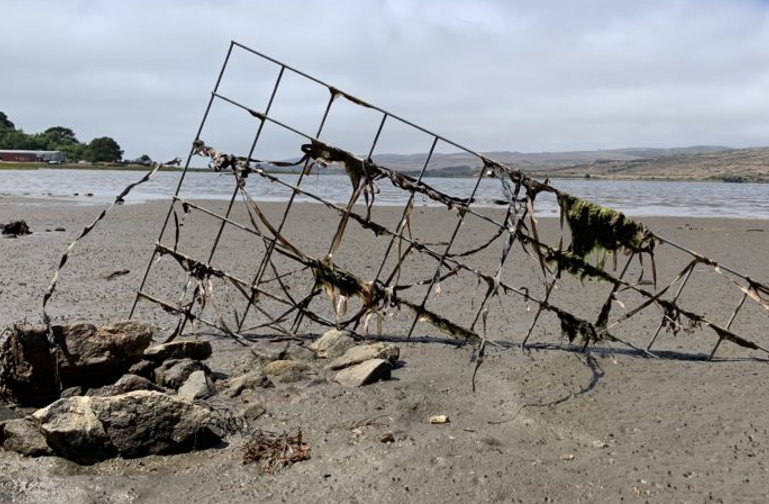We live in an age of intersecting political, social, ecological, and technological crises. The pace of change is increasing, the apocalyptic voices are loud, and scientists’ measurements seem to confirm our worst fears. These are scary times for anyone willing to look the facts in the face. As the saying goes, it can be easier to imaging the end of the world than the end of extractive capitalism.
And also, many of us know in our bones that there is another way. A way to build an ecological civilization within the inherent limits on a planet of finite resources, a way that values both human life and more-than-human lives, a way that heals rather than poisons the lands, waters, and air. I do not mean an impossible, dead-on-arrival utopian vision, but rather a pragmatic, relational, bioregional approach to culture- and place-making in which life actually thrives.
Living with a paradox is being able to hold two different, even opposite, truths and allowing them to coexist in a complex relationship, because we do not, and cannot, know what the future holds.
How do we live in the middle of the Both/And of this paradoxical time, when we are still enmeshed in the broken system that essentially forces us to use toxic products made halfway around the world, possibly with child labor, for the enrichment of a few jillionaires? How can we live into the future we know can be, when the present we are living in is so compromised?
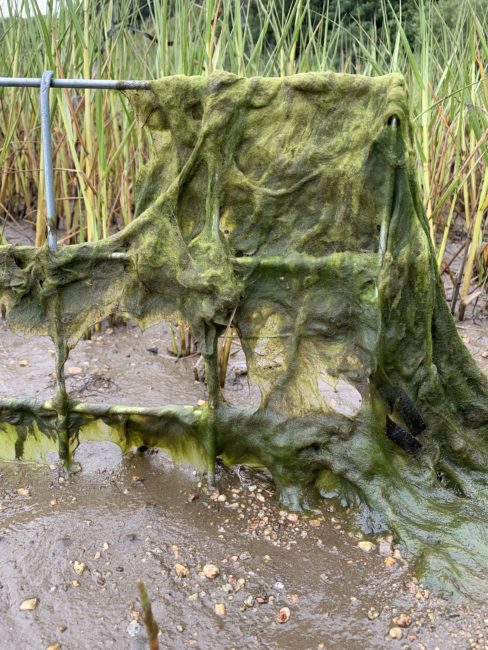
48″ x 10″, construction waste, algae, 2 weeks, 2021
I propose that we start from within, by regularly replacing the cacophony of consumer culture and the media with doses of silence, rest, and time in nature (no screens allowed).
Wordsworth phrased it well:
The world is too much with us; late and soon,
Getting and spending, we lay waste our powers;—
Little we see in Nature that is ours;
We have given our hearts away, a sordid boon!
Personally, when the facts and predictions feel overwhelming, I go to the sea. The sea has been ebbing and flowing every day, in and out, for four billion years. Being in the presence of its magnificence helps me remember my vanishingly small place in space and time. Breathing in those healthy ions also helps mitigate my delusions of grandeur about fixing all the ills of the world and allows me to find more joy in the doing of daily life. If we each take care to fill our deep wells of internal resources, we will stave off bitterness, exhaustion, cynicism, and despair.
The next step is to open our eyes to the truth of where we are as a civilization right now. The time for wishful thinking is gone, and we must learn all we can about the reasons a growth-based economic order is selling out our future.
The Post Carbon Institute has excellent resources, and the Deep Adaptation community is a similar goldmine of expertise on the scary but not implausible possibility of cascading crises leading to systemic collapse. No one wants this to happen, so these experts propose myriad ways we can reshape breaking systems to serve life rather than destroy our planetary home. As Jeremy Lent points out, there is a tremendous opportunity to reweave the fraying fabric of society, even as it seems to be falling apart around us. Indeed it is the very loosening of society’s tightly woven structure that creates the openings for new cultural designs.
Grief is inherent in any honest accounting of where our civilization has come to. As an inveterate optimist, I was slow to come to ecological grief (though I can admit some denial and bargaining in retrospect). In writing The Atlas of Disappearing Places: Our Coasts and Oceans in the Climate Crisis over the past four years, I learned about the many challenges to come: arctic feedback loops, deep-sea mining, ocean dead zones, salination of rice paddies, intensifying cyclones, wetland loss, toxic algal blooms, overfishing, coastal flooding, rising seas for centuries to come, and much more. All of this lies at the feet of the fossil fuel industry, with its cheap energy, toxic petrochemicals, and omnipresent plastics.
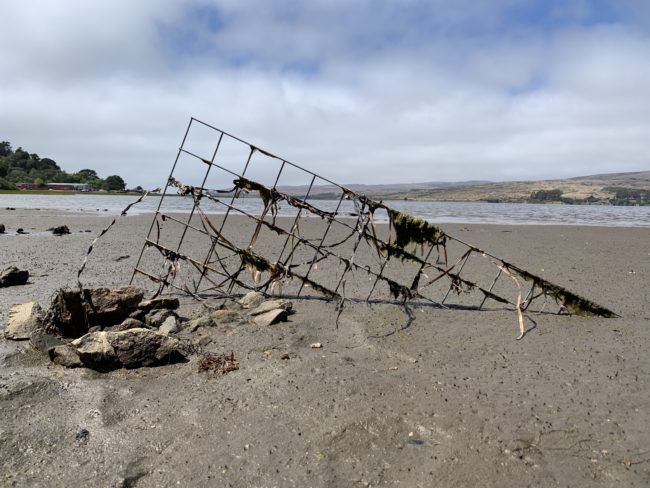
50″ x 28″, construction waste, algae, 1 week, 2021
It was devastating to learn that seas will rise 7 feet for every degree Celsius of atmospheric temperature rise. And again to read that the UN expects 248 million climate migrants to leave home in search of food and safety in the coming decades. These are literally breathtaking numbers, requiring humility as much as outrage. We can and should be angry about these facts, and grief is a healthy response to loss. If we share our grief with each other, rather than allow it to keep us isolated and alienated, it can become an act of solidarity, of political will.
When we are clear-eyed in this way, we can better tell the truth to ourselves and each other: that nations’ “carbon neutral” pledges are mere greenwashing that will not achieve the Paris climate goals; that the Paris climate targets are inadequate to keep global temperatures below the +1.5 degree mark; that greater temperature increases will likely trigger systemic feedback loops we cannot manage or mitigate. We need to tell the truth.
We then need to tell each other new stories – stories of how things can be. In The Atlas of Disappearing Places, I wrote many “future histories” that imagine actions that could make all the difference, from today’s youth activists becoming tomorrow’s political changemakers to new international agreements on migration to lawsuits advancing the rights of nature. Many people are devoting all their energy, creativity, and intelligence to advancing these movements, and the research shows that cultures can – and do – “tip” when enough people align on the side of a new paradigm.
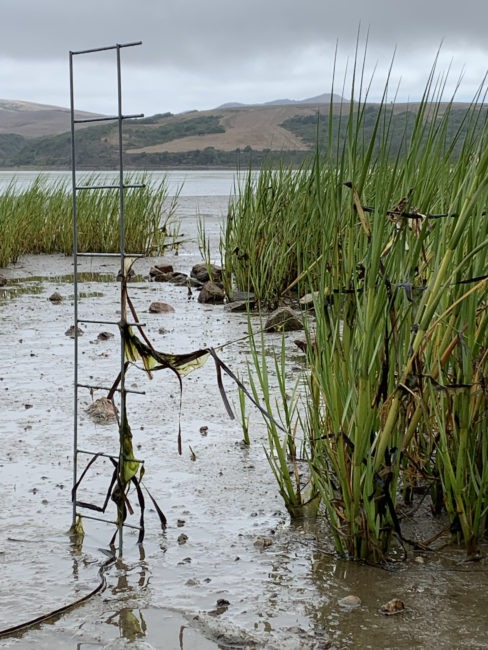
6″ x 32″, construction waste, algae, 1 week, 2021
I believe we are nearing that tipping point. I have noticed a significant shift in the direction of awareness and action since 2017. It can feel like a “dead heat” with the forces of destruction and deterioration, with the race too close to call. But here is where we must not despair, but return to our own breath, our close relationships, and our caring communities. We must ground ourselves in deep and enduring practices so that we can collectively move away from rapacious individualism toward collective health and wisdom.
The first revolution is when you change your mind – Gil Scott-Heron
It is difficult to picture these new places that are worth fighting for and making real. In my experience (and as noted in this prescient Donella Meadows video), people resist imagining the world they want, because sitting with the uncertainty is very uncomfortable and because staring into the abyss between where we are and where we need to be is downright painful. Where do we even start? This both/and is a tough spot to inhabit mindfully, without checking out for some retail therapy or vitriolic tweeting, but staying present with what is, is the practice. Staying present is everything.
One resource I’m really enjoying as I try to imagine our process-driven, emergent, regenerative future is Biominga, the “biomimicry oracle” (developed by Nan Woodman, Hugo Araujo, Robert Suarez, and Gama Sibanda). It is a digital tool to which you present a question, then “spin the wheels” of nature-based inspiration to see how various kinds of knowledge within natural systems might help you understand and move your question towards action.
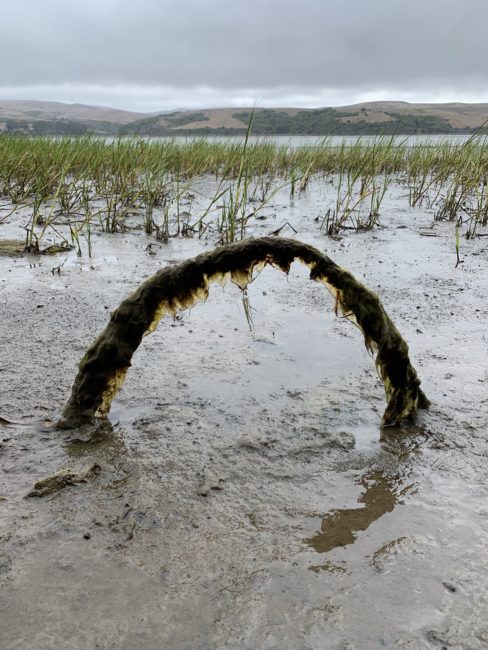
14″ x 10″, rope, algae, unknown duration, 2021
For instance, on one random spin of the three intersecting wheels that reflect biological processes (Disturbance, Mutation, and Behavior), Biominga answered with these three cards: Mutualism, Jumping Genes, and Geographic Isolation. The Geographic Isolation card tells about the Italian wall lizard, which was taken to a new island as part of an experiment where it radically adapted in just 36 years with a larger head and a new vegetarian diet to new conditions. The card then asks, “How might we adapt to disturbance and changing conditions by innovating?” like the lizard. It’s a brilliant tool for getting us to think in new ways that don’t use outdated assumptions about social Darwinism and instead use our current knowledge of biological systems as inspiration! It’s playful and especially great for brainstorming in groups.
If we are both very determined and very fortunate, we are at the beginning of a major transformational process toward healthier, happier socio-ecological systems. Each of us holds a piece of this new story that needs to be written. So let’s talk with each other around campfires real and digital, sharing what we know and gaining tools, inspiration, and warmth from the others gathered there.
Teaser photo credit: 50″ x 28″, construction waste, algae, 1 week, 2021. Author supplied


